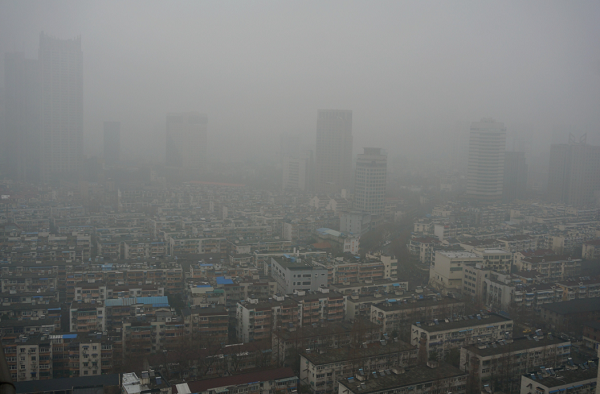India Replaces China As Top Sulfur Dioxide Emitter From Coal, Researchers Say

Over the last decade China has made efforts to decrease the level of emissions created by the country, something it has been successful in doing. The country has been especially successful when it comes to decreasing the amount of sulfur dioxide, the pollutant caused by burning coal. But the emissions China has successfully cut have been balanced out by an increase in the same pollutant coming from India, researchers from NASA and the University of Maryland found.
The research was published in Scientific Reports last week and details the satellite data that show emissions of sulfur dioxide in China are down 75 percent from levels in 2007, while emissions in India are up 50%.
What is sulfur dioxide?
Sulfur dioxide is one of many types of gaseous sulfur oxides, according to the Environmental Protection Agency. It’s the oxide of greatest concern for scientists though because it has the highest concentration in the atmosphere. It’s used as an indicator for how high the levels of other sulfur oxides likely are because the same sources of sulfur oxides also cause other sulfur oxides to form. These generally get into the air through the burning of fossil fuels either at factories, for energy or to power vehicles.
China and India are the world’s largest coal burners so they emitted the most sulfur oxide that can cause acid rain and can harm foliage and ecosystems exposed to the oxides. It can also decrease the visibility in the area because they cause haze. In addition to the environmental impacts there are a number of health impacts the oxides pose, including the respiratory problems especially in the very young, the elderly and those with asthma, according to the EPA.
The researchers used two different methods to measure the emissions in both countries. They first looked at the emission amounts based on the number of factories, power plants and any vehicles that emit sulfur dioxide. This isn’t the most reliable way to measure emissions so the researchers also used a second method. That involved using the Ozone Monitoring Instrument on NASA’s Aura satellite. This satellite can detect large emissions sources, but the downside is that the data can be skewed by clouds or other atmospheric conditions. But by combining the two data sources and working with algorithms used to quantify emissions based on the OMI data the researchers were able to get more reliable numbers.
While the data doesn’t completely perfectly describe the data happening on the ground in all of these areas at the present time, it does help researchers better understand the way the conditions have changed rapidly and might also change in the future.
© Copyright IBTimes 2024. All rights reserved.





















